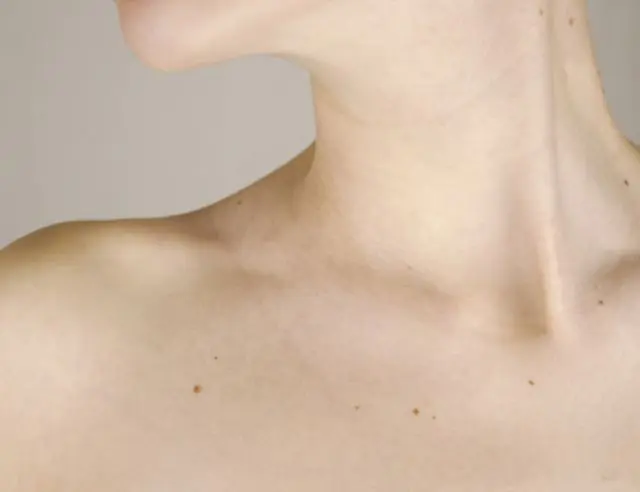
- Reasons for appearance
- What do postpartum papillomas look like?
- Treatment methods
- Vitamins
- Antiviral drugs
- Cauterizing agents
- Folk recipes
- Removal of papillomas after childbirth
- Features of prevention
Postpartum papillomas are benign neoplasms that appear on the body of women after childbirth. They usually form no earlier than a month after delivery. They come in different shapes, sizes and colors, and are localized on various parts of the body and internal organs. They are less treatable than papillomas that arise independently of the reproductive process, since therapy for papillomas after childbirth is limited by a number of factors related to the need for lactation.
Causes of papillomas after childbirth
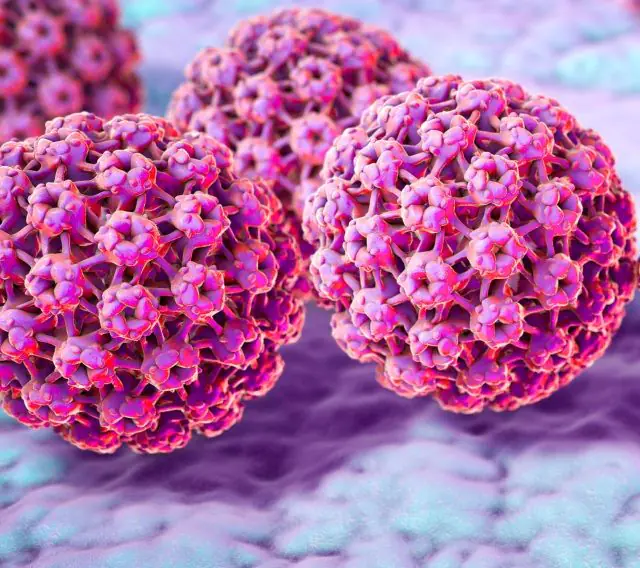
The main cause of skin papillomas after childbirth is infection with the human papilloma virus. Many women experience their appearance during pregnancy. But there are also those who acquire them within a short time after childbirth. Let's figure out what this is connected with.
People of both sexes are susceptible to HPV, regardless of age and type of activity. However, there are factors that contribute to the activation of the disease and the appearance of papillomas. The specifics of the female body’s functioning during the postpartum period is one of them.
Let's look at the causes of papillomas after childbirth:
- Hormonal changes. After conceiving a child, a woman’s hormonal background is aligned in such a way as to maximally help the fetus to fully develop and be born without complications. After this process is completed, the body tries to return to its original mode of life activity, and then adjust hormones to continue reproductive functions. These changes, expressed in hormonal fluctuations, respond in the body with increased susceptibility to diseases, including viruses. If a woman is not yet infected with HPV, but is exposed to the pathogen (for example, if a family member is infected), she has a very high chance of becoming infected. If the papillomavirus is already present in the body, then a change in the background will contribute to the activation and increase in its concentration, which causes the appearance of papillomas after childbirth.
- Decreased immunity. First, pregnancy, then childbirth and the postpartum recovery period hit a woman’s immune system very hard. At this time, there is a risk of exacerbation of all chronic diseases and more active activity of viruses and bacteria, which are the causes of many ailments, including HPV. The body to a much lesser extent, sometimes completely blocks the release of interferons - proteins that fight viruses. Thus, the papillomavirus, finding no resistance, actively multiplies in the body, which is why papillomas appear after childbirth.
- Weight change. The first two factors have a significant impact on changes in a woman’s body weight during the postpartum period. Despite the fact that childbirth leads to weight loss, very soon, in conjunction with poor nutrition, this can lead to weight gain, which often causes the formation of papillomas on the lower extremities.
- Poor nutrition. The need to breastfeed a baby is associated with impressive gastronomic restrictions. This is necessary in order not to cause an allergic reaction and not to provoke physiological disorders in the child’s body. In this regard, women cannot always ensure the completeness of their diet, take into account all the necessary vitamins, micro- and macroelements, but most of them go into breast milk without being absorbed in the woman’s body. Lots of flour, little protein and fiber - and excess weight is guaranteed.
- Mechanical impact. First of all, this includes the constant impact on the mammary glands during lactation. At this time, the breasts increase significantly compared to the prenatal period. Therefore, it is not always possible to choose the right underwear that can make the baby’s access to the nipples comfortable and quick, while at the same time not restricting movement or causing discomfort to the mother. However, even if the bra or top is chosen correctly, even contact of the material with the epidermis can cause papillomas after childbirth.
- Neglect of personal hygiene rules. Often people who are in intimate relationships neglect separate shower and bath accessories and bed linen. In addition, women undergoing postpartum rehabilitation in medical institutions are recommended to shower in shoes, and are prohibited from standing barefoot on the bottom of the shower stall, bathtub, or on the floor of the sanitary block.
Doctors believe that one of these factors is quite enough for papillomas to appear after childbirth. And in postpartum activities, unfortunately, this entire set of reasons often occurs simultaneously.
There are objective circumstances that do not allow women to eliminate these provoking factors, but if a mother wants to protect herself from the transformation of benign growths into malignant ones, she needs to do everything in her power.
What do postpartum papillomas look like?
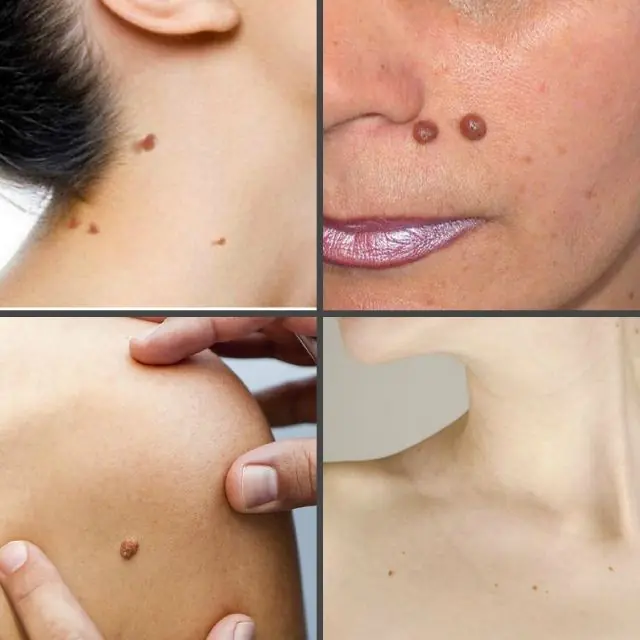
Photo of papillomas after childbirth in a woman
Analyzing the types of neoplasms with which women turn to dermatologists during the postpartum period, doctors call threadlike papillomas the most common. In second place are vulgar warts. This is followed by genital warts, and spines and flat warts complete the list. Let's take a closer look at these types of neoplasms: what they look like and where they are localized.
There are the following types of papillomas after childbirth:
- Vulgar (simple) warts. These are epidermal inclusions ranging in size from 1 to 10 mm. They are much paler than the area on which they are located. When subjected to mechanical stress, they can be bright pink or even acquire a reddish tint. When left on the skin for a long time, they become keratinized. They are most often located on the fingers of the upper and lower extremities. However, papillomas after childbirth can occur on almost the entire body.
- Flat warts. These are growths slightly protruding above the epidermis, often round in shape, but can also have an uneven edge. As a rule, the skin around the tumor is paler. They are located mainly on the face.
- Filiform papillomas. These are long growths attached to the epidermis by a thin stalk. They can range in color from almost white to dark brown. They mostly have a yellowish tint. They are localized mainly on the neck, under the armpits, and under the breasts. The size ranges from a couple of millimeters to 10 mm. Rarely are they more than 1 cm. They are the most common papillomas after childbirth.
- Condylomas acuminata. One of the most unpleasant types of neoplasms. They primarily affect the anogenital zone. These are small growths, usually not different in color from the epidermis on which they are located. So named because they often have a pointed edge. Often they appear in whole areolas with 5-10 or even more inclusions. Extremely traumatic and at the same time quite painful.
- Spikes (plantar warts). They are located mainly on the feet. They can also be located on the fingers of the upper and lower extremities. Their distinctive feature is that they grow inside the epidermis, and not outside. They have sizes from 1 mm to several centimeters. Often their presence is accompanied by the formation of a rounded ridge of keratinized skin. Inside the tumor you can see black dots, which are thrombosed capillaries.
Methods for treating papillomas after childbirth
If papillomas appear after childbirth, their treatment should begin with a consultation with a dermatologist, surgeon or oncologist and always a gynecologist. First, you should make sure that these are papillomas and not moles or melanomas. Secondly, choose a method that is suitable specifically for your current health condition.
Since after childbirth a woman’s immunity is significantly reduced and a transformation in the release of hormones occurs, the body will react more sharply to possible irritants found in therapeutic drugs. But at the same time, the virus itself will be more difficult to eliminate. Therefore, an integrated approach will be needed in the treatment of papillomas after childbirth. It will consist of the use of vitamin complexes, antiviral agents or external cauterizing drugs. They can be both medical and folk.
This task is complicated by the fact that, due to the need to feed the child with mother's milk, the entire possible range of medical products in the arsenal of a modern dermatologist cannot be used. Only gentle drugs are used here. If none of them suits the patient, surgical removal must be performed.
Vitamins for papillomas after childbirth
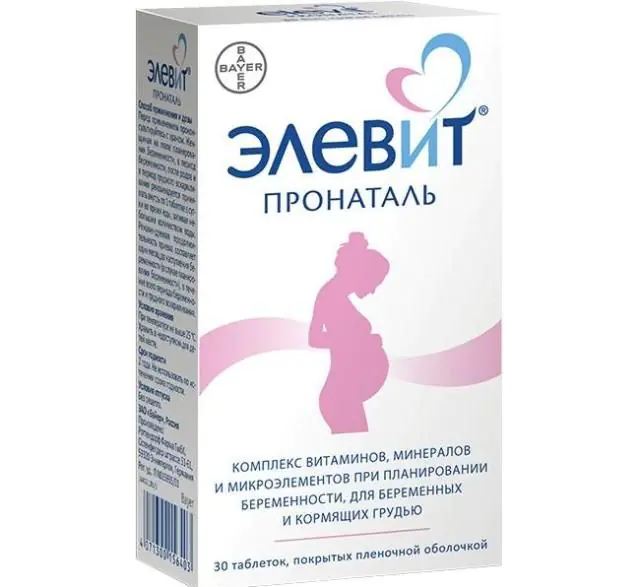
The first thing you need to do to fight papillomas after childbirth is to help the body boost its immunity. To do this, it is necessary to use special vitamin complexes containing a number of useful components. Here it is better to resort to the help of those remedies that are recommended during pregnancy. They are selected in such a way that they will not harm the baby if they enter his body through breast milk.
Pay attention to the following drugs:
- Vitrum Prenatal Forte. Contains B vitamins, as well as A, E, D, C, calcium, magnesium, iron, copper, zinc, iodine, manganese, molybdenum, selenium and chromium. You need to take 1 tablet per day. The price of this drug is from 651 rubles in Russia, from 425 hryvnia in Ukraine.
- Elevit Pronatal. It contains 12 vitamins and 7 minerals. A distinctive feature of this complex is the fact that it does not contain iodine. This is a disadvantage for residents of those regions where, due to poor ecology, additional consumption of this component is necessary, but a big plus for patients suffering from a fairly common allergy to this substance. It is also necessary to use this remedy for papillomas after childbirth, 1 tablet, 1 time per day. The price of the product is from 576 rubles in Russia, from 204 hryvnia in Ukraine.
- Multi-Tabs Perinatal. It contains 11 vitamins and 9 minerals. Manufacturers note that the drug contains sucrose, but there is no gluten or preservatives - allergy sufferers should especially pay attention to this information. One tablet a day during or immediately after meals will provide the body with the necessary resources to boost immunity and fight viruses. The price of vitamins is from 557 rubles in Russia, from 404 hryvnia in Ukraine.
Analogs of these drugs are Complivit Trimesterum, Pregnavit, Doppelherz and other complexes for expectant mothers and nursing women.
Antiviral drugs for the treatment of papillomas after childbirth

Photos of antiviral drugs for papillomas after childbirth
To suppress HPV, the use of antiviral drugs is necessary. As a rule, doctors recommend using the oral form of these drugs together, and not just using external ones. However, the lactation period is not the best time for such therapy, since it is not comparable to breastfeeding. After the end of lactation, general recommendations for the treatment of papillomas that appear after childbirth are applied, and during breastfeeding - limited.
Antiviral agents:
- Papilight. The drug is based on the extract of rhododendron Adams, caragana, garlic, propolis, diatoms, red pepper, Jerusalem artichoke and other more than 50 active ingredients. When applying externally with nozzle No. 1, you need to take a drop from the middle phase and apply it to the new formation, without rubbing or massaging. After 15 minutes, apply a drop from the lower phase using nozzle No. 2 and rub in for 2 minutes. After another 15 minutes, nozzle No. 3 removes liquid from the top layer and, also when applied to the papilloma after childbirth, rubs it in thoroughly. This procedure must be performed twice a day until the growths disappear. Papilight price - from 990 rubles. in Russia, from 339 UAH. in Ukraine.
- Papiderm. The product contains extracts of black walnut, shiitake mushrooms, maclura, Canadian goldenseal, cordyceps and potato shoots. The scheme and frequency of use of this product is the same as the previous one. Price - from 359 rub. in Russia, from 248 UAH. in Ukraine.
- Viferon. This is an interferon-based ointment. It is applied in a thin layer to the papilloma 3-4 times a day for a week. The price of the drug is from 120 rubles. in Russia, from 141 UAH. in Ukraine.
Also, in the treatment of papillomas after childbirth, women resort to the help of Salicylic ointment, Virogel, Panavir cream and other means.
Cauterizing agents for postpartum papillomas

If previous drugs fought papillomas after childbirth by affecting the virus, then these data have a destructive effect on cells mutated by the virus.
Cauterizing agents:
- Sleigh Skin. This product is based on salicylic acid, castor oil and tea tree essential oil. External treatments should be carried out three times a day for 2 weeks until the papillomas disappear. The price of Sani Skin is from 2490 rubles in Russia, not for sale in Ukraine.
- Papilovir. A product based on carbolic acid, sodium and potassium hydroxide, perlite oil, red pepper, garlic extract and propolis. The regimen for use of this drug is the same as for other drugs that have a three-phase structure. The price of Papilovir is from 990 rubles in Russia, from 339 hryvnia in Ukraine.
Traditional recipes against papillomas after childbirth
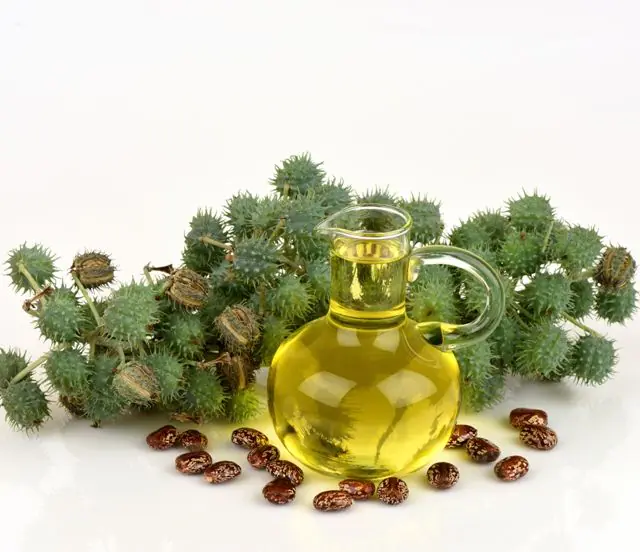
Traditional medicine recipes include two types of methods for treating papillomas after childbirth: internal use of tinctures and external treatment of tumors. During breastfeeding, only applications are allowed. And this must be done with great care so as not to cause an allergic reaction.
Let's consider folk remedies for postpartum papillomas:
- Oil mixture. Mix equal amounts of eucalyptus, lemon and tea tree essential oils. Rub the resulting liquid into the tumors every day before bed.
- Castor oil. Daily use of castor oil will help to achieve cleansing of the skin. Rub it into the papillomas after childbirth, then cover the treated areas with a plaster.
- Celandine. For this recipe, it is better to use not pharmaceutical concentrate, but freshly cut shoots of the plant. Lubricate the papillomas with the juice released from the stems once a day.
- Rowan and wormwood. Mix the rowan fruits and wormwood stems in a blender in equal parts. Squeeze the resulting pulp through cheesecloth. Treat new growths with this juice several times a day.
- Garlic. In order to use this product as a remedy for papillomas after childbirth, you need to peel the clove, grind it into a paste, and rub it on the new growths several times a day.
Read also how to remove papillomas with celandine at home.
Removal of papillomas after childbirth
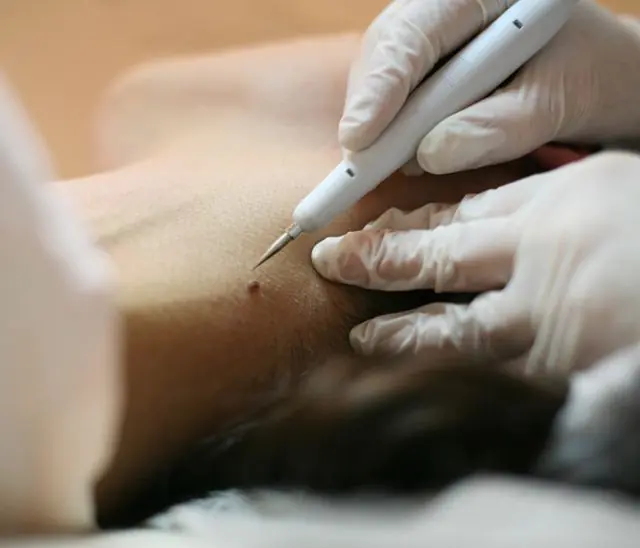
If treatment with medications and folk remedies does not produce results or the patient has contraindications to their use, it is possible to remove papillomas after childbirth.
The traditional surgical method is prohibited, since it involves the use of strong painkillers and the patient staying in the hospital for up to 2 weeks, which is almost never compatible with caring for infants.
Recommended methods for removing papillomas after childbirth:
- Laser. The growths are removed using a special laser scalpel. The price of the procedure is from 3000 rubles. in Russia, from 1300 UAH. in Ukraine.
- Electrocoagulation. The method involves exposing neoplasms to high-frequency electric current, which allows the papilloma to be destroyed from the inside. The price of the procedure is from 550 rubles. in Russia, from 250 UAH. in Ukraine.
- Cryofreezing. The neoplasm is exposed to liquid nitrogen, which leads to destruction at the treatment site. The price of the procedure is from 360 rubles. in Russia, from 150 UAH. in Ukraine.
Depending on the size of the papilloma that appears after childbirth, the period of its presence on the body and the depth of germination in the tissue, 1 to 3 procedures may be needed.
As a rule, laser therapy and electrocoagulation are carried out using local anesthetics, and cryodestruction does not involve anesthesia.
Important! Breastfeeding mothers are advised to stop breastfeeding for a day.- Read also, what is better to remove papillomas - radio wave method or laser
Features of the prevention of postpartum papillomas
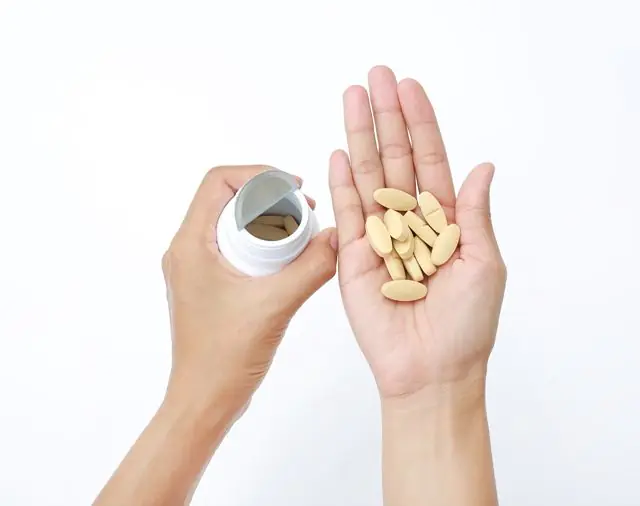
It is necessary to start preventing the formation of papillomas after childbirth even before conception. It is worth doing this not only for the sake of the mother’s health, but also to ensure the safety of the child.
Doctors note that if a mother has papillomavirus in her blood, the likelihood of transmitting it to the newborn during labor is very high. And in the presence of neoplasms, especially in the anogenital zone, it is close to 100%. Therefore, if you are planning to become parents, begin preparing for fertilization by undergoing antiviral therapy and removing growths.
If you did not know about the presence of HPV in the body and encountered this problem after becoming a mother, you need to familiarize yourself in detail with the information about the causes and treatment of papillomas after childbirth and resort to one of the following methods of prevention: strengthening the immune system, personal hygiene, choice clothes according to size.
Of course, there are situations when the fight against papillomas must be immediate. For example, if they are located where they can infect a child with the virus - on the mammary glands or hands. But if they are localized in places that are not in contact with the baby, are very small and do not increase in size, and do not cause discomfort, it makes sense to wait a little with papillomas treatment after childbirth. It is quite possible that in the near future the mother will get involved in a new rhythm of life, her immunity will become stronger, and the papillomas will go away on their own.
- Related article: Consultation with a virologist for papillomas



